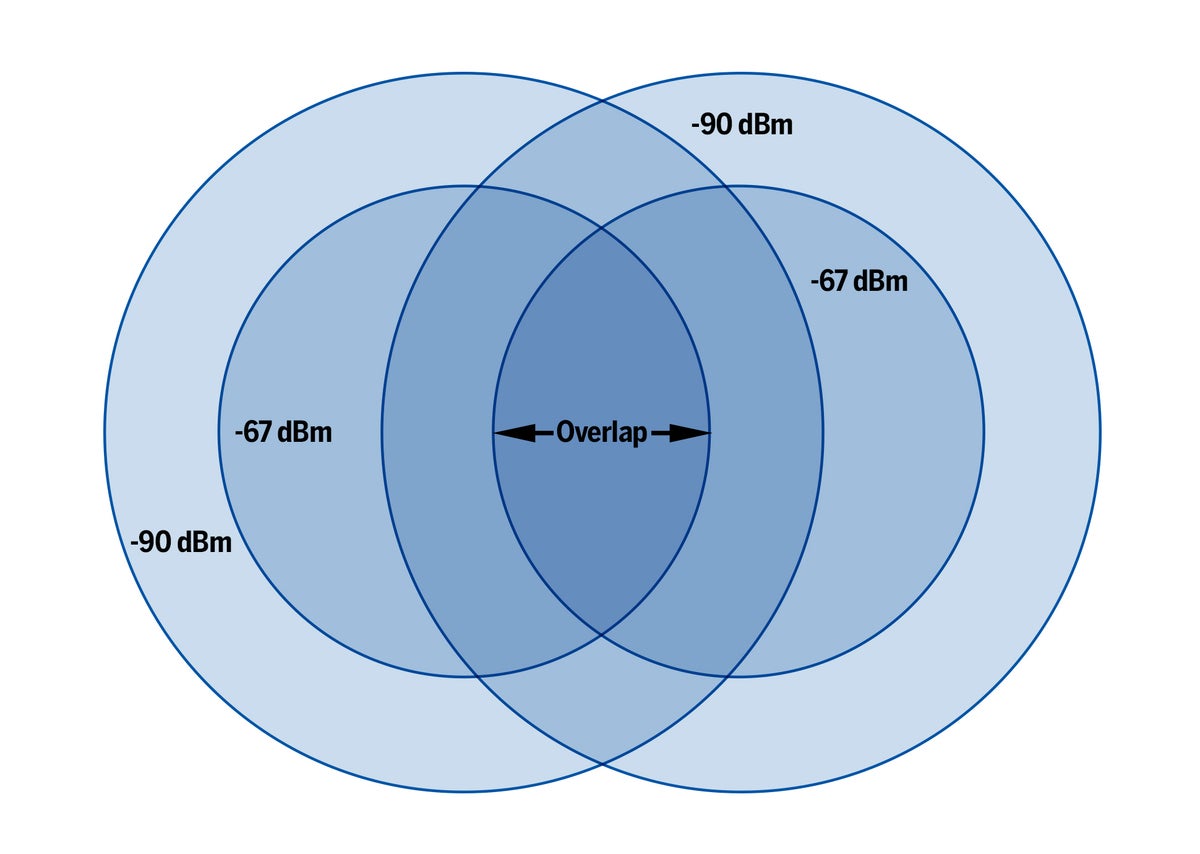
User satisfaction with Wi-Fi relies in part on whether the network supports smooth handoffs between access points as users and their devices roam about, and if the APs don’t do their job well, users will complain.
The initial tendency may be to install more APs in hopes of finding an easy fix, but doing so without careful analysis can make the situation even worse. Proper roaming requires more than just good signal strength throughout coverage areas; it takes a careful balance between the coverage of each AP on both 2.4 and 5GHz bands to make roaming work right.
Understanding access-point overlap
Once connected to a particular Wi-Fi network as designated by its Service Set Identifier (SSID), Wi-Fi clients are constantly scanning in the background for other APs with the same SSID. If it finds one with a better signal, it should seamlessly connect to it and drop the previous connection, and it should do so at a point that doesn’t result in a poor experience for the end-user.
Getting the coverage overlap just right between all the APs in your network is one of the most important things you can do to help improve the roaming. At the same time, it is one of the toughest. You have to check the coverage throughout the coverage areas and analyze the overlapping. If issues are found you need to figure out how to address them, perform the fix, and then double-check that it’s actually fixed.
Keep in mind you want about a 15% to 20% coverage overlap between AP cells, using -67dBm as the signal boundary for each cell. You want to look at both bands, too, keeping in mind 2.4GHz naturally provides longer range than 5GHz. Less overlap can result in spots with bad signals. If you have too much overlap between AP cells in either band, it can cause co-channel interference and “sticky” clients that don’t roam, which can result in APs that become overloaded with clients. You want the AP cells spaced just right so clients keep roaming to the best AP for that particular location.
NETWORK WORLD
Evaluating overlap and roaming
It’s important to establish a map of AP-cell overlap and test how well roaming is working before and after making changes. There are different ways to go about this, but all involve walking throughout the network coverage areas. A very effective method is doing a walkthrough with professional surveying software such as AirMagnet or Ekahau and analyzing the data. These tools provide heatmaps that show the coverage area of each AP and how the client roamed between APs. It’s also possible to use free apps to spot-check signal levels of APs and which ones the client is connected to.
Before testing, ensure you have an accurate, up-too-date floor plan of all coverage areas marked with the AP locations and their wireless MAC addresses. That way when you walk around or when you analyze results later you can see which AP the client was connecting to throughout the coverage areas.
source: www.networkworld.com/uk/
